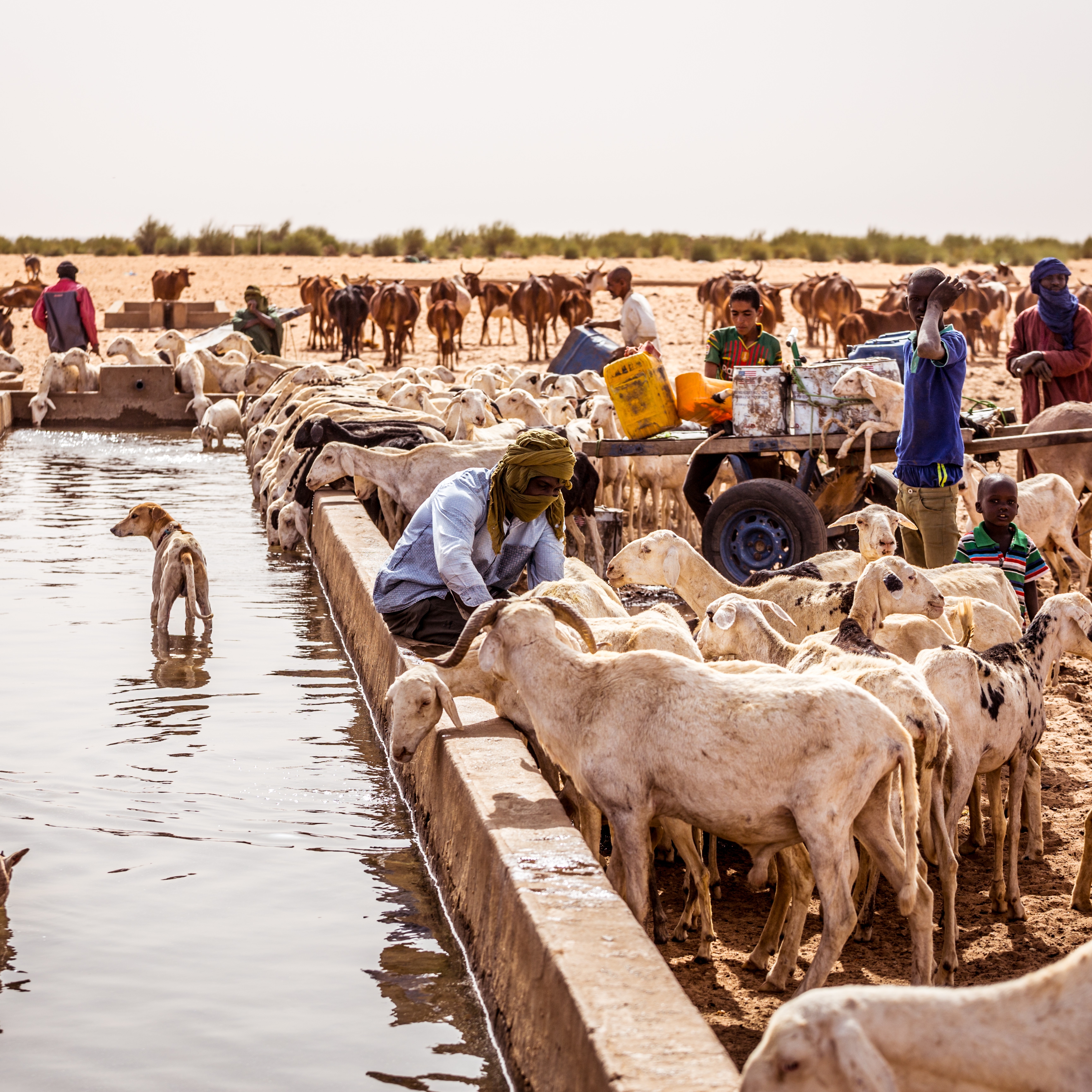IOM Vision
Climate change has been impacting the route and calendars of nomadic herders throughout Western Africa threatening the peaceful cohabitation between all involved stakeholders as competition to access natural sources fuels violence and forced displacements. At the local level, IOM supports its Member States to develop early alert mechanisms and to reinforce local conflict mitigation strategies to pre-empt the risk of conflicts associated with herds movements. At the regional level, IOM supports the Economic Community of West African States (ECOWAS), its Member States, the regional herders' network and its national members, promoting multilateralism by ensuring that ECOWAS remains the forum where international transhumance is managed in a harmonized way.
Objective
Driving solutions to displacement
Local authorities and communities of all social groups, internally displaced persons (IDPs) and nomadic herders, benefit both directly and indirectly from IOM's interventions. IOM contributes to building the capacity of representatives from the aforementioned entities to establish or strengthen inclusive, transparent and accountable decision-making processes. The decisions made within the various fora supported by IOM to improve services, benefit a larger number of users, either local or those temporarily stationing or crossing the area. The way the activities are carried out will impact the perception of relegation among the various groups, thus contributing to greater social cohesion and stability.
IOM applies its substantial experience in community stabilization along at-risk zones, as defined by the Transhumance Tracking Tool, to work with local governance structures in communities regularly affected by transhumant movements to define conflict mitigation and resolutions methods. IOM’s programmes in the eight targeted countries (Mauritania, Mali, Niger, Burkina Faso, Cameroon, Chad, Nigeria and CAR) shall include the following activities:
- Linking local authorities, line ministries and civil society to implement local solutions, including the establishment of mixed communities at borders that include all concerned authorities, leaders and groups of herders. Such activities ensure the inclusion of nomadic population into local community structures.
- Supporting the resolution of potential land tenure issues, through local negotiations and the formalization of traditional tenue in a transparent and participatory manners. This will enable securing pastoral space that has been shrinking due to land grabbing, decentralization and urban development.
- Rehabilitating community infrastructure to cater for the passage or the temporary station of herds (transhumant corridors, water points, markets, etc.).
IOM promotes the participatory and inclusive local decision-making processes to define priority actions while supporting relevant line ministries to directly support communities, who may otherwise be aggrieved, in the prioritization process.

Objective
Contribute to an evidence-based and efficient crisis response system
Pastoral Organisations (national and regional) and relevant line Ministries involved in the implementation of the ECOWAS Transhumance Protocol will benefit from regional flow monitoring. Local Mapping and Early Alert System will be aimed at local authorities and relevant civil society receiving the information and informing conflict mitigation strategies at the local level. Ultimately, the data provided through the Regional Flow Monitoring and the capacity developed to transfer the tools to the respective governments and civil society will inform annual Transhumance campaigns and the regional framework dedicated to Transhumance.
IOM supports its Member States along the regional transhumance corridors to develop and apply a unified data collection mechanism to inform sound policies as it pertains to the regional governance of transhumant mobility. To do so, IOM will broaden the application of the Transhumance Tracking Tool in the 14 targetted countries as follows:
-
Mapping of transhumance corridors (including water points, grazing areas, markets, border posts, inter alia);
-
Early Alert notifying at-risk communities ahead of the arrival of at-risk herds to ensure communities can agree on solutions to facilitate safe passage ahead of clashes materialising;
-
Regional Transhumance Movement Tracking for the enhanced provision of reliable and unified analysis to enable regional decision-making.
Mauritania, Senegal, Mali, Guinea, Niger, Burkina Faso, Côte d'Ivoire, Ghana, Togo, Benin, Nigeria, Chad, Cameroon, Central African Republic
The map used here is for illustration purposes only. Names and boundaries do not imply official endorsement or acceptance by IOM.
Figures are as of 31 December 2023. For more details of IOM's operational capacity in country, please see the IOM Capacity section.



